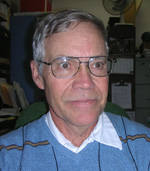Five Minutes With Audio & Video Home
fiveminuteswith
University of Wisconsin-Milwaukee Eliminates the use of Chemicals on Turf Areas as Part of Grounds Management Program
Dennis Greenwood, manager of grounds and landscaping at the University of Wisconsin-Milwaukee, discusses his institution eliminating the use of chemicals on its turf areas and the impact the decision has had on the campus.

Dennis Greenwood
Manager of Grounds and Landscaping
University of Wisconsin-Milwaukee
1. Why did the university eliminate the use of chemicals on its turf areas?
Chemical use on the lawns was eliminated due to a public perception of the hazards posed by the use of chemicals, and the belief that an aesthetically pleasing lawn can be maintained without the use of chemicals. Also, there was some upper level administrative support for the elimination of lawn care chemicals.
2. How did the decision impact your department's budget?
A substantial amount of money had to be added to our budget to cover the additional costs of a natural lawn care program. We have pretty close to 23 acres of lawn and adding just an eighth of an inch of compost required 385 cubic yards of product to put down. We did a couple of test runs with our personnel and equipment and soon discovered that we were not capable of applying that much product without purchasing additional equipment and adding substantial amounts of overtime. We contracted out the compost application and we did our own aeration. Core aeration was done three times through the season and in the past it was only done once. We also did our own over-seeding and we had to purchase a special spreader for that. And we are also doing a later season application of Milorganite to the lawn utilizing that same spreader. Some overtime was required to get the job done.
3. What was role did you play in the decision to discontinue the use of chemicals and in how to care for the turf areas going forward?
I was somewhat the naysayer regarding a total abandonment of lawn care chemicals. I recommended that we not totally abandon herbicides on the lawn and I fully expect that we will have some weed encroachment. The vast majority of our lawn areas have no irrigation system available to them. We also have recurring compaction issues. Having said that, I would like to add that we could not have been blessed with a better season to kick this program off. We had a cooler summer with adequate rainfall, we got a reasonably good catch on our over-seeding, and the compost application went exceptionally well.
4. How did your department's responsibilities change with the new approach to turf care?
Our department's responsibility is to maintain an aesthetically pleasing campus, and nothing has changed in that regard. Natural lawn care has become a different tool in the arsenal for maintaining that goal.
5. How did the turf care change affect your department's equipment fleet inventory and maintenance?
Equipment changes have been minimal so far. As mentioned before, we purchased a front-mount spreader to put on a utility vehicle, and we use that to spread grass seed and fertilizer. Milorganite is considered organic, so that is our current fertilizer of choice. We have a top-dresser but it would be to slow to spread the volume of compost that we had to have put down. Perhaps in the future we would purchase our own compost spreader but that would require further analysis.
6. What has the reaction been from staff and students regarding the new approach to turf care on campus?
Our sustainability office has been putting out some good press so that the community in general is more aware of our efforts. On a personal note, the addition of compost to our lawn care program is a fantastic opportunity to put something back into the soil. We have been feeding our grass clippings back on a regular basis and we also grind up our leaves in fall to feed them back into the lawn. The compost is just an added boon to the soil.
Find more on this topic:
grounds management, turf areas, chemicals
posted: 11/3/2014








